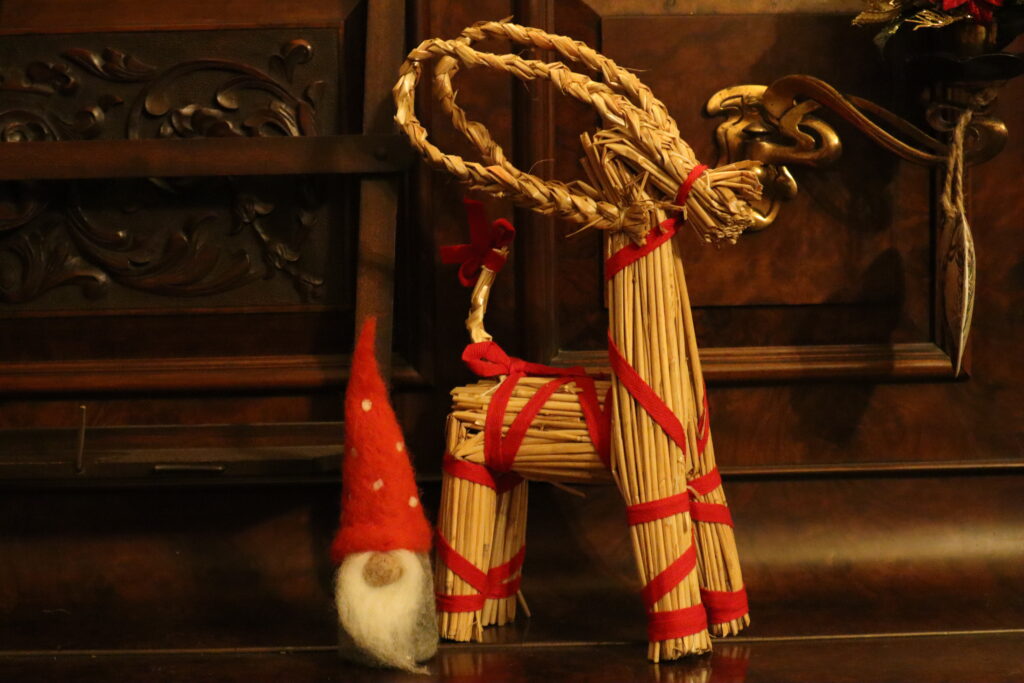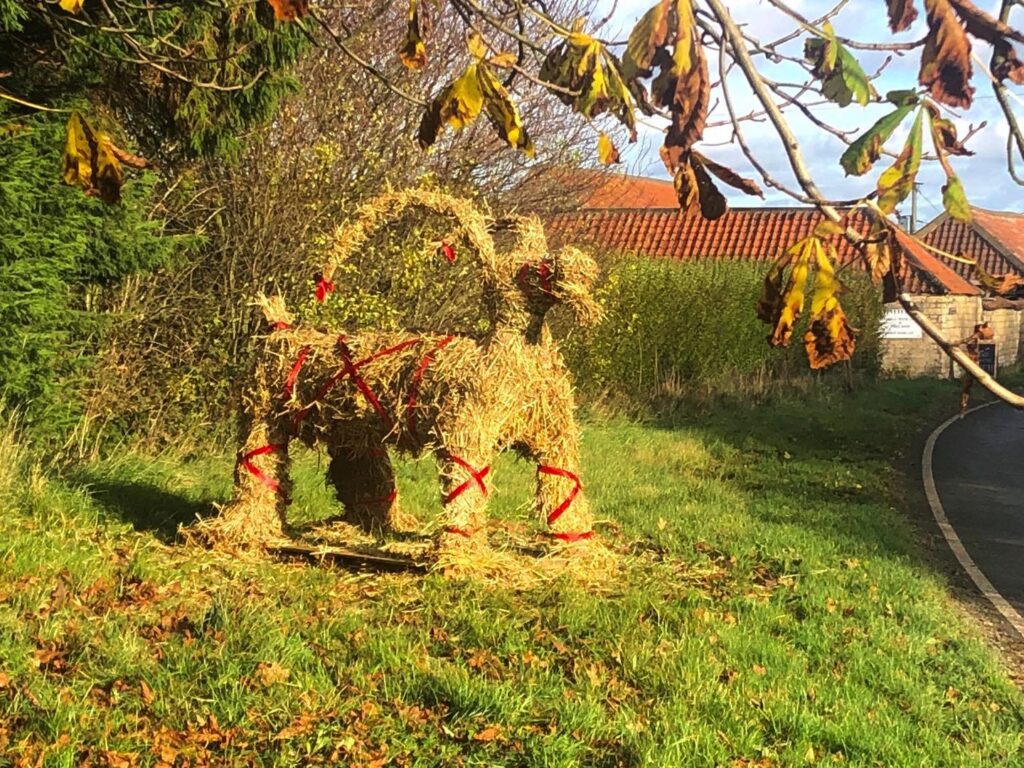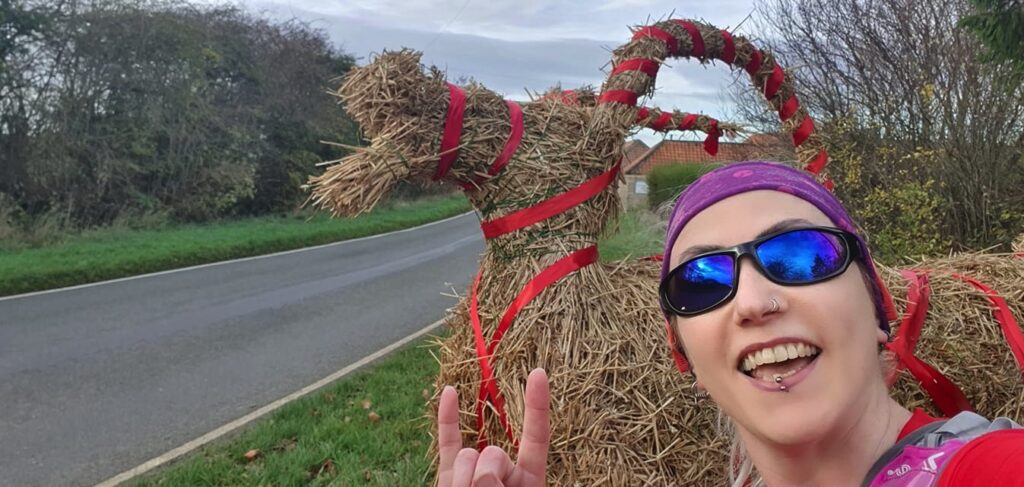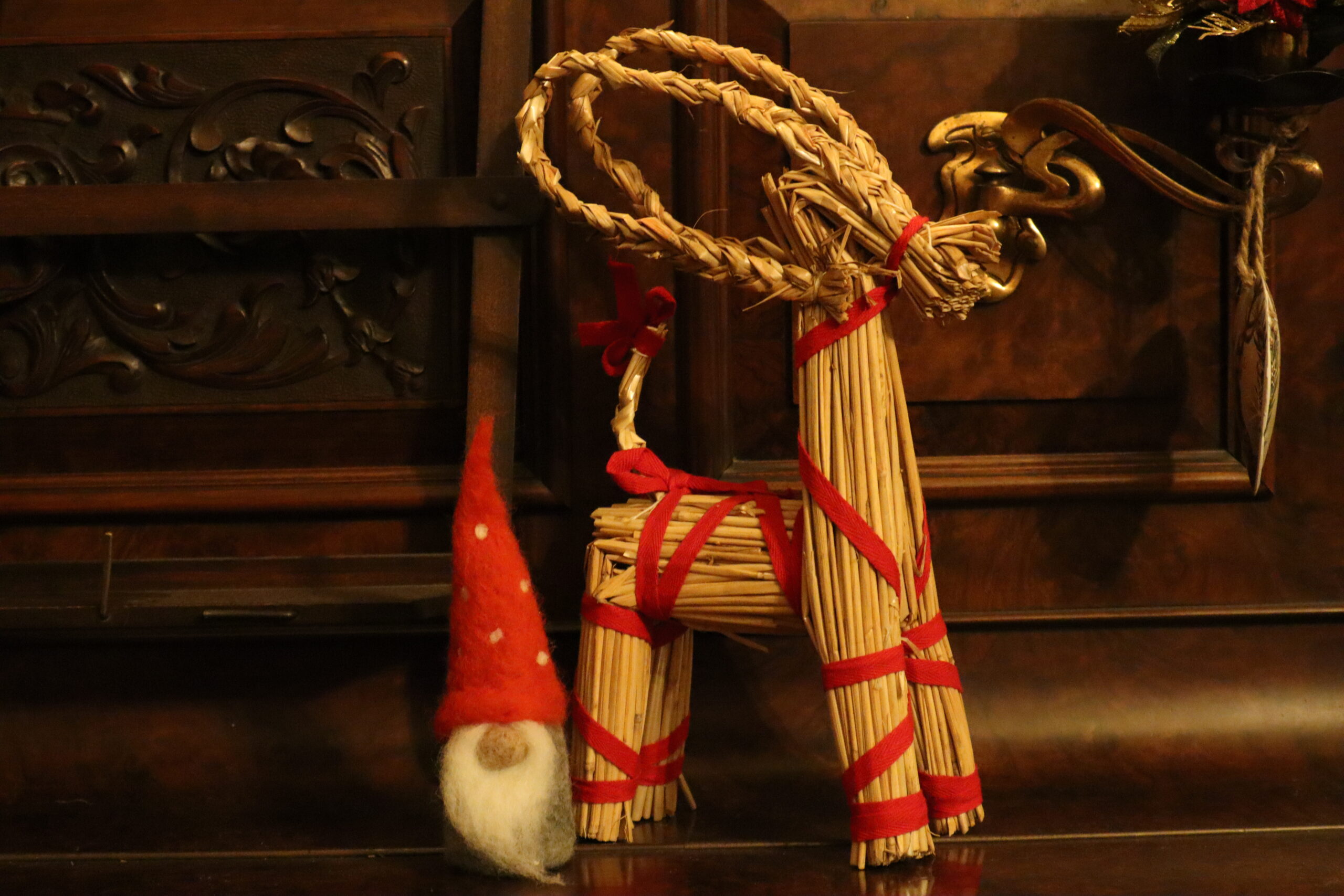
Many people have asked me why I have built a straw reindeer in front of our farm. The answer is…….. I haven’t!
Each year I build a straw Yule goat and since this isn’t a tradition that most people are familiar with, I thought we should look into it a little.
The straw Yule Goat has some very old roots in history. It is primarily a Scandinavian tradition and is said that it dates back to the old Norse tradition of Thor riding his chariot pulled by goats, but other traditions have it being St. Nicolas bringing gifts accompanied by a goat on Childmas.

The tradition of making the goat from straw comes from the old beliefs that the last sheaf of grain was bundled up and kept to keep the spirit of the harvest safe for the following year. This sheaf was bundled up and fashioned into the Yule Goat. In more modern times this has turned into a prank/game played with a neighbour. The game is that you are to try and sneak the straw goat into the neighbours house without them noticing. The family who were then successfully pranked then had to get rid of the straw goat in the same way.
I don’t know about you, but to me that sounds like a fun game!?

In modern times it has become more of a Christmas decoration found under the tree. Some cities has taken to building a giant straw Yule Goat (julbok) in the town centre.This tradition was started in the 1960’s with the Gavle goat.

This is where our farm tradition came from. Each year we have built a straw Yule goat outside our farm. It has drawn a lot of attention and people seem to really enjoy seeing him.We have people asking when he will be appearing outside the farm, people beeping their horn and waving as we build him and we even have people taking selfies with him, which I LOVE!!!! ?✌?

Another fun tradition which is similar to an old English tradition, is between Christmas and new year, going to your neighbours houses dressed as Yule goats singing Christmas songs. The neighbours then has to try and guess who is under the disguise. They are then rewarded with sweets. This is called Julebukking. The English version of this was in the medieval period and was called ‘mumming’. Again you would dress up in disguise and the neighbours had to try and guess who was under the disguise. The mummers wouldn’t leave until they had been given a treat. Mummers were generally trolls and monsters and were a little scary and as such, eventually mumming was banned.
So now when you drive past the farm and see our julbok, you will know who he is and why we put him out.
I hope you have enjoyed learning a little about some different Christmas traditions and enjoy seeing our Julbok.
Merry Christmas
Sam x

